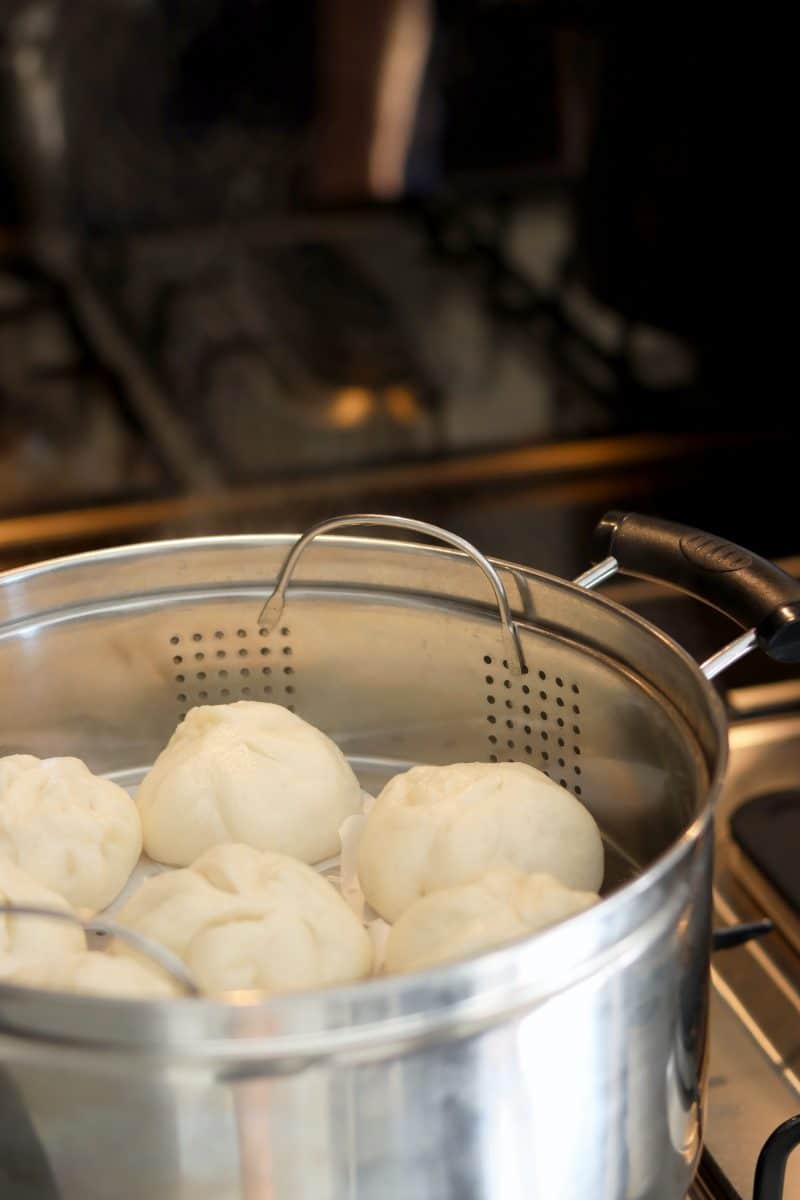Steaming and braising are both use a moist heat environment to prepare food.
Steamed food is cooked by the steam from boiling water. This method is often used for delicate foods such as seafood, vegetables, and dumplings, as the steam helps to retain the food’s texture, flavor, and nutrients.
- To safely steam food, use a steaming basket or colander to keep food out of the boiling water and make sure the water level is below the bottom of the steaming basket or colander. Use a lid to cover the pot and trap the steam. And check the water level regularly and replenish as needed to prevent the pot from boiling dry. Avoid overcrowding the steaming basket, as this can prevent the steam from circulating and cooking the food evenly.
Braised food is first browned in a hot pan with oil, and then slowly cooked in a covered pot with liquid. This method is often used for tougher cuts of meat such as beef short ribs, chicken thighs, and pork shoulder, as the slow cooking process helps to break down the connective tissue, making the meat tender and flavorful. Braising also allows the flavors from the liquid and seasonings to penetrate the food.
Some common braising liquids used in cooking are
- Chicken, beef, or vegetable broth
- Red or white wine
- Beer
- Tomato sauce or canned tomatoes
- Soy sauce or other Asian-style sauces
- Balsamic vinegar or other fruit vinegars
- Dijon mustard mixed with broth or wine
- Coconut milk
- Apple cider or apple juice
- Coffee or espresso

